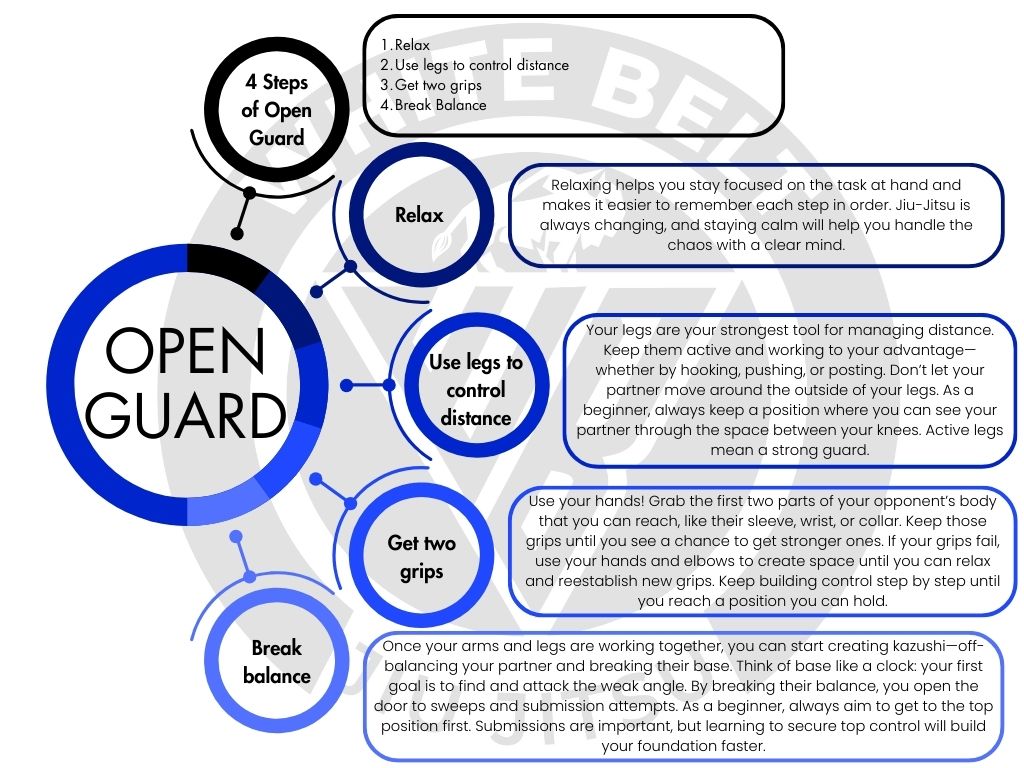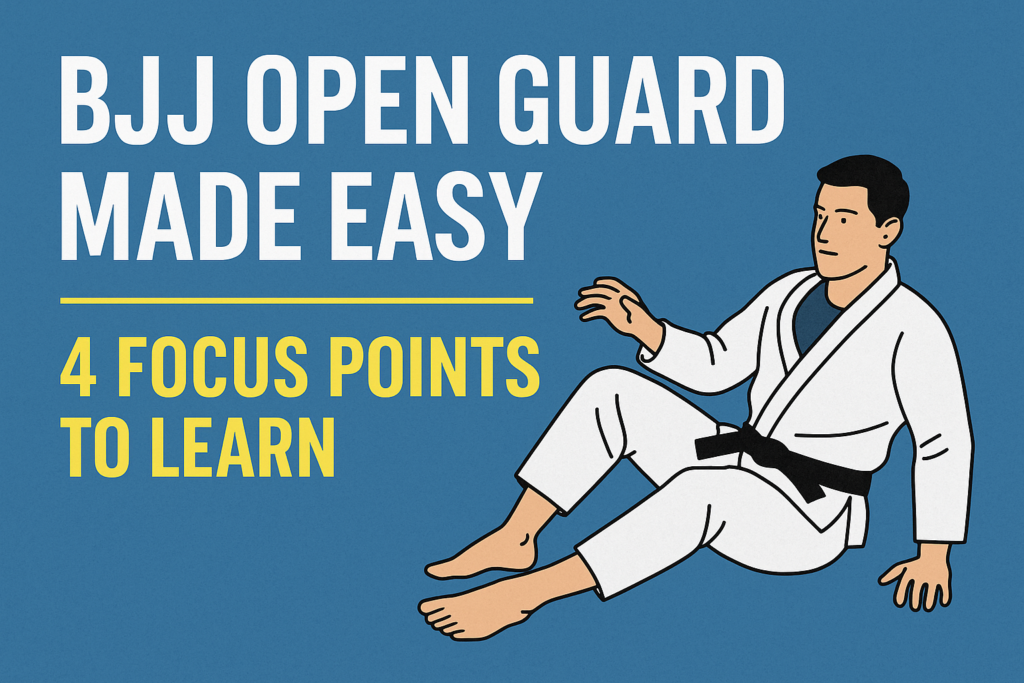Why White Belts Struggle with Open Guard
If you’re new to Brazilian Jiu Jitsu, one of the first positions that feels tricky is the BJJ open guard. Unlike closed guard, where your legs are locked, open guard leaves you exposed if you don’t know how to manage space. Many beginners feel like they are always about to be passed.
The truth is, you don’t need to memorize dozens of moves right away. Instead, focus on four simple principles. By applying these steps, the BJJ open guard becomes less overwhelming and more of a safe, reliable position to build your game. These concepts are part of our White Belt Jiu Jitsu platform, where new students learn structure and confidence from day one.
Focus Point #1 – Relax and Stay Calm
The first rule of success in the BJJ open guard is to relax. Tension wastes energy and slows your reaction time. Relaxing keeps your mind clear and helps you remember each step in order. Jiu Jitsu is constantly changing, and if you panic, you’ll get stuck. Calmness allows you to respond smoothly to your opponent instead of fighting with stiff, wasted movements.
Focus Point #2 – Use Your Legs to Control Distance
Your legs are your strongest tools in the BJJ open guard. Think of them as built-in shields. Whether you’re posting on the hip, hooking with your feet, or pushing against the body, your legs create the space that keeps you safe. Never allow your partner to move outside your knees—if they do, you’re in danger of losing guard. As a beginner, always keep them in view through the middle of your legs. Active legs equal a strong guard.
Focus Point #3 – Get Two Grips and Keep Building
Grips are the glue that holds the BJJ open guard together. Use your hands to secure the first two points of contact you can reach, such as the wrists, sleeves, or collar. Once you establish grips, hold them until you can improve. If they break, don’t freeze—use your elbows and hands to create space until you can relax and reset. Rebuilding grips is part of the process. The more consistently you fight for them, the more control you’ll gain.
Focus Point #4 – Break Their Balance (Kazushi)
The final key is to attack your partner’s base. In the BJJ open guard, this is called kazushi, or off-balancing. Imagine your opponent’s posture like a clock—you’re searching for the weak angle to tip them. By breaking balance, you create chances for sweeps and submissions. Submissions are tempting, but beginners should focus on sweeping to the top first. Developing top control gives you a stronger foundation and prepares you for every position in the future.
Download the Free Open Guard Focus Chart
To make these steps stick, we’ve created a BJJ open guard focus chart you can download and keep handy. Post it on your wall, save it to your phone, or bring it to training. Seeing the four points regularly will help reinforce them until they become automatic.

Why These Four Points Work for Every Beginner
Every advanced guard game starts here. By staying relaxed, using your legs, building grips, and breaking balance, you turn the BJJ open guard from a weak spot into one of your strongest learning positions. These four points give white belts clarity, structure, and confidence. Instead of just surviving, you’ll learn how to control the pace and set up your own attacks.
Train Open Guard with Us in Thibodaux
At Next Generation Martial Arts in Thibodaux, we teach beginners how to succeed with positions like the open guard. Our curriculum follows a clear system that helps you progress without feeling lost. With structured lessons and guidance from higher belts, you’ll see results fast.
Ready to train? Visit Next Generation Martial Arts and claim your free trial. See how these open guard principles come to life and how quickly your game improves.

